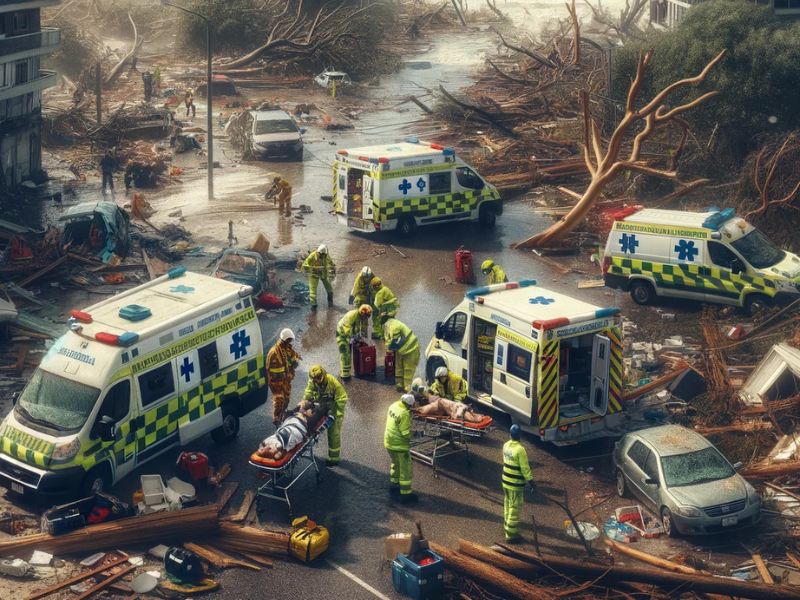
The Drama of Severe Weather in Argentina and Uruguay
The Response of Rescuers in the Face of Devastating Storm
The Devastation of the Storm
Over the weekend, an unprecedented electrical storm struck the Atlantic coast of Argentina and Uruguay, leaving behind a trail of destruction and tragedy. With a death toll of at least 16, the storm demonstrated its devastating power. In Argentina, the small town of Bahia Blanca bore the brunt of the impact, where the collapse of a wall during the storm resulted in the death of 13 people. In neighboring Uruguay, two people lost their lives due to strong gusts of wind that hit the region in the early hours of Sunday. Further losses were reported in Argentina, where a woman died following the fall of a tree branch in the city of Moreno. This calamitous event drew the attention of Argentine President Javier Milei, who visited the site of the incident, highlighting the importance of immediate response and assistance to the victims.
The Efforts of Rescuers
In response to the crisis, highly trained rescue teams were deployed in the affected areas to carry out search and rescue operations. These teams, composed of experienced professionals, braved adverse conditions to locate and assist storm victims. The priority was to provide immediate aid to the injured, quickly evacuating those in need of urgent medical care. Additionally, rescuers worked to locate any survivors trapped under debris caused by the collapse of structures and trees. Rescue operations were complicated by the extensive network of debris and the instability of damaged infrastructure. Despite these challenges, rescuers demonstrated remarkable teamwork and dedication, working tirelessly to restore safety and order in the affected areas.
The Impact on the Community and Preventative Measures
The community affected by the storm is now facing the long and challenging process of reconstruction and healing. Grieving families are trying to cope with the loss of their loved ones, while local authorities are focusing on assessing the damage and providing support to those affected. The storm has highlighted the critical need for more effective early warning systems and better community preparedness to deal with extreme weather events. Discussions are intensifying on how to strengthen infrastructure and improve urban planning to better withstand similar natural disasters in the future. The storm has also underscored the importance of closer intergovernmental and cross-border cooperation in disaster prevention and response, especially in a context of growing climate variability.
Reflections and Future Perspectives
This tragic event has emphasized the vital importance of well-organized and prepared emergency response systems. The timely and coordinated response of rescuers has saved lives and provided essential assistance during critical moments. This experience provides important lessons on how rescue agencies can further enhance their strategies and protocols to respond more effectively to future disasters. As rescue operations continue and communities begin their path to recovery, it remains clear that resilience, preparedness, and cooperation are crucial for addressing and overcoming the challenges posed by increasingly frequent and severe natural disasters due to climate change.


